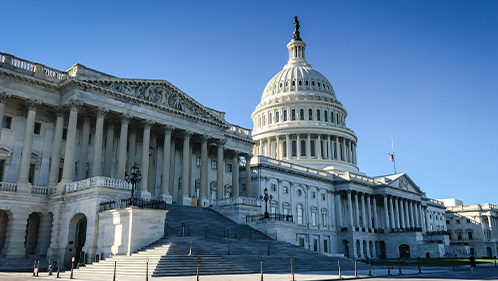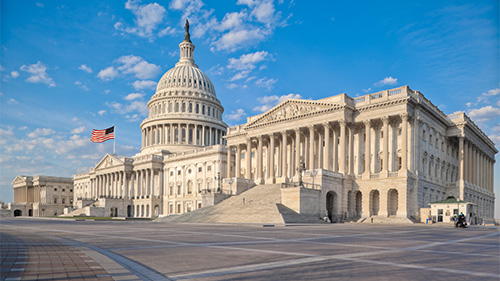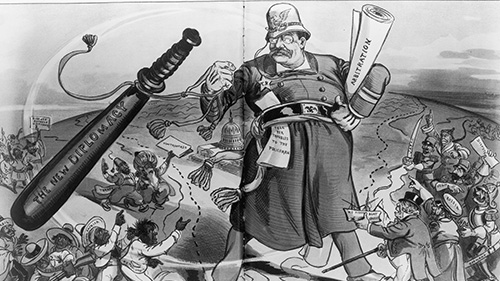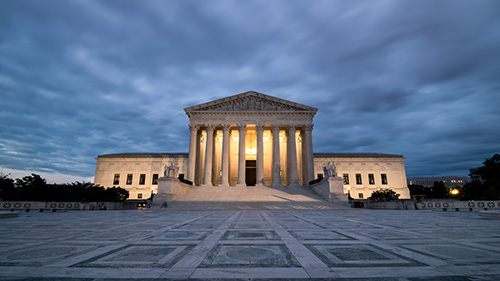Acing the AP® U.S. Government & Politics Exam with David Wolfford
Though the College Board’s AP® United States Government and Politics FRQs #3 and #4 may be more involved and seem more challenging, FRQ #1 and #2 can...
AP & Honors Mathematics
Explore Wiley titles to support both AP and Honors mathematics instruction.
Literacy Skills & Intensive Reading
Connections: Reading – Grades 6–12
Empower student success with a proven intensive reading program that develops strong reading skills in striving readers.
Drama, Speech & Debate
Basic Drama Projects 10th Edition
Build students’ confidence and competence with comprehensive, project-based theatre instruction.
Literature
Connections: Literature
Support learners as they study dynamic, relevant texts and bring the richness of diverse voices to students through literature.
Literature & Thought
Develop critical thinking, reading, and writing across literacy themes, genres, historical eras, and current events.
Language Arts
Vocabu-Lit® – Grades 6–12
Help students build word power using high-quality contemporary and classic literature, nonfiction, essays, and more.
Connections: Writing & Language
Help students develop grammar, usage, mechanics, vocabulary, spelling, and writing and editing skills.
Reading/English Language Arts
Measuring Up to the English Language Arts Standards
Incorporate standards-driven teaching strategies to complement your ELA curriculum.
English Language Learners
Measuring Up for English Language Learners
Incorporate research-based best practices for ELLs with an approach that includes a focus on language acquisition strategies.
Mathematics
Measuring Up to the Mathematics Standards
Incorporate standards-driven teaching strategies to complement your mathematics curriculum.
Foundations
Measuring Up Foundations
Help students master foundational math skills that are critical for students to find academic success.
Science
Measuring Up to the Next Generation Science Standards
Give students comprehensive NGSS coverage while targeting instruction and providing rigorous standards practice.
Assessment
Measuring Up Live
Deliver innovative assessment and practice technology designed to offer data-driven instructional support.
For a better website experience, please confirm you are in:
2 min read
Patrick Sprinkle Apr 30, 2024 3:15:41 PM

Discover how simulations can enhance learning in AP® U.S. Government and Politics. Engage students with hands-on activities like discretionary budgeting to deepen comprehension and foster multidisciplinary understanding.
As an educator, one of my primary objectives is to foster joyful learning. Joyful learning occurs when students are given the flexibility to collaborate, examine multiple perspectives, and make sense of material that is relevant to their own lives. Throughout my career teaching Advanced Placement Government and Politics, I have found that simulations offer an important opportunity for students to make real-world connections, engage in complex problems, and reach their own solutions based on their values. Whether it is a moot Court, designing campaign commercials, mock Senate hearings for Supreme Court nominees, or crafting Presidential campaigns, the work is real and relevant. For this, I will discuss how I used discretionary budgeting to engage my students.
Simulations in social studies offer a dynamic learning experience, promoting active participation, critical thinking, and empathy. Students take on different roles, make decisions, and grasp the complexities of past events. Collaborative group work enhances communication skills and highlights the collective nature of policy-making. By integrating various subjects and personalizing learning, simulations foster a multidisciplinary understanding of government, making it relevant and enjoyable for students. Simulations deepen comprehension, providing a comprehensive approach to studying the act of governance.
For this lesson, students should understand the difference between discretionary and mandatory spending. While $700 billion may sound like a lot of money, it is only a sliver of the federal budget. From there each teacher must decide how to frame the lesson. Do you want to divide students into political parties with different goals? Do you want students to design a budget based on their values? Should students be assigned to current members of Congress? The choices are limitless.
.png?width=250&height=141&name=poker%20chips%20stacks%20(1).png)
One strategy I used to encourage engagement was the use of boards and poker chips. The boards were each of the 14 discretionary categories and poker chips that represented $10 billion each. Using poker chips was helpful for kinesthetic learners and allowed students to see just how much goes into each category of the federal budget. Many students remarked on the size and scope of our discretionary military spending.
The most powerful understandings for my students were not only the size and scope of the discretionary budget, but how the current Biden budget does not represent their values and attitudes. This allowed us to pivot toward why this is the case and how difficult budget reform is given the impact of interest groups and the goals of the two major political parties. In summation, it was a powerful activity that not only brought joy, but greater understanding.
Pat Sprinkle is a 15th year history teacher at the NYC Lab School for Collaborative Studies, teaching AP® U.S. History and AP® U.S. Politics and Government. Pat is a graduate of The Ohio State University and Columbia University. Pat has served as a member of the Teacher Advisory Council for the Bill and Melinda Gates Foundation, National Humanities Center, and the National Constitution Center. In addition, Pat was a 2013 James Madison Fellow along with a 2021 C-SPAN Fellow. Pat lives in Jersey City, NJ with his wife, son (Franklin), and dog (Lyndon).

Though the College Board’s AP® United States Government and Politics FRQs #3 and #4 may be more involved and seem more challenging, FRQ #1 and #2 can...

Each year after the AP® exam I ask students to evaluate my class. Last year, they overwhelmingly identified that they wanted to work on FRQs more...

The argumentative essay question on the AP U.S. Government and Politics exam demands a synthesis of content knowledge, analytical skill, and...

The Free-Response Question (FRQ) portion of the Advanced Placement® exam provides test takers with the opportunity to demonstrate their knowledge on...

In 2021, the College Board® added a new section to the AP® U.S Government and Politics Exam: quantitative analysis. This counts for four raw points...

AP® instructor and consultant Brian Stevens shares how he implements Cornell Notes in his AP® Government classroom. Be sure to download his template...

One of the most common tasks I see in the social studies classroom is the use of primary sources. The power of letting people choose their own story...

Political cartoons have influenced the public and brought about change like other tools in the press. The historic 1754 cartoon of a sliced-up snake,...

One of the personal stories I frequently share with my students is how I nearly became a lawyer. I majored in political science and philosophy in...

If you read my previous blog post, The Most Foundational Document: The U.S. Constitution, you'll have noticed a classroom activity for the...

It’s about that time. The Advanced Placement® Government & Politics Exam is around the corner. I’m sharing my top five tips to help you prepare...

You know the Style #4 Free Response Question on the College Board’s national Government exam can be a real challenge. I am talking about the argument...
